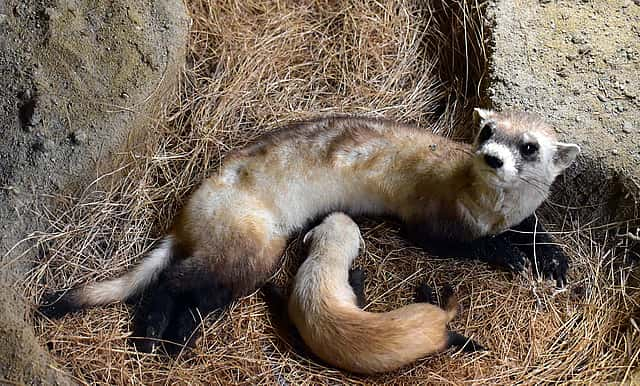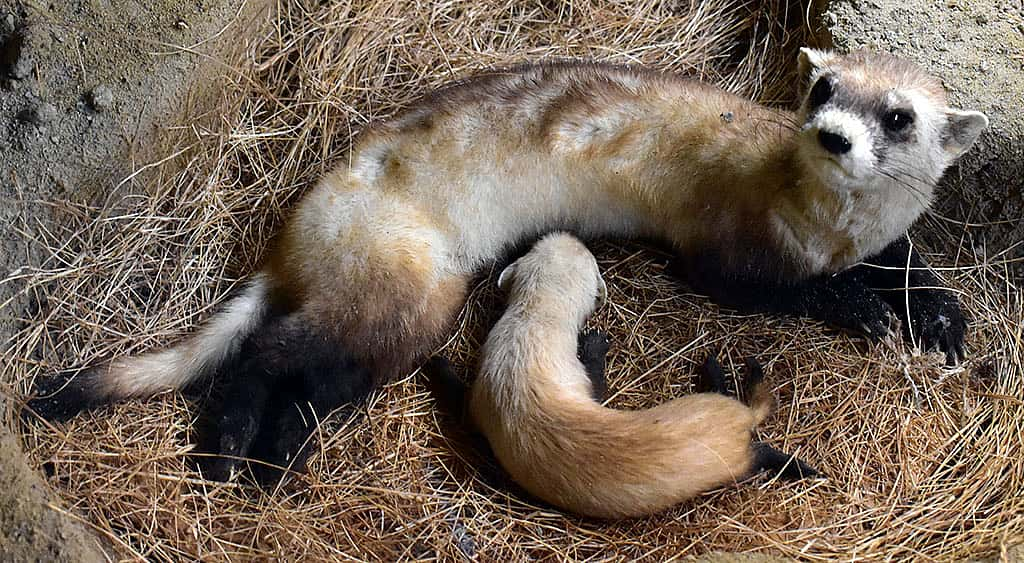
Treasures from Our West: Black-footed Ferret Specimen
Originally featured in Points West magazine in Spring 2018
Black-footed Ferret Specimen
If the black-footed ferret (Mustela nigripes) could be summed up in one word it would be tenacious. Black-footed ferrets historically numbered in the tens of thousands across the fertile prairies and basins wherever colonies of prairie dogs, their primary prey, were found. Measuring 18–24 inches long and typically weighing less than three pounds, the black-footed ferret is a highly specialized predator of the prairie dog.
Prairie dogs routinely comprise more than 90 percent of the black-footed ferret’s diet and are intrinsically linked to the survival of the species. Not only do ferrets depend on prairie dogs for food, they also reside and raise young in prairie dog burrows. Extensive habitat conversion and range-wide extermination programs targeting prairie dogs almost caused the extinction of the black-footed ferret by the 1950s. In 1964, scientists learned of a small remnant population in South Dakota thought to be the only surviving members of the species. Captive breeding programs were initiated but the last surviving ferret in the captive population died in 1979. For a second time, the black-footed ferret was declared extinct, until 1981 when a ranch dog named Shep came home with a dead ferret in his mouth. Unbeknownst to the rest of the world, a ranch near Meeteetse, Wyoming, harbored the only surviving population of black-footed ferrets in the world.
With renewed hope, a second captive breeding attempt was initiated (though sylvatic plague and canine distemper virus almost wiped out the Meeteetse population before the ferrets were captured). Today, more than four hundred black-footed ferrets are living in the wild, with a recovery goal of three thousand across their historical range. The black-footed ferrets in the Draper Natural History Museum’s Plains/Basin Environment are displayed on authority from the U.S. Fish and Wildlife Service’s Black-Footed Ferret Recovery Program. After the ferrets died in captivity, the U.S. Fish and Wildlife Service and the Smithsonian Institution transferred them to the Draper for educational purposes.
Black-footed ferret (Mustela nigripes) specimen. DRA.305.37
Post 199
Written By
Nancy McClure
Nancy now does Grants & Foundations Relations for the Center of the West's Development Department, but was formerly the Content Producer for the Center's Public Relations Department, where her work included writing and updating website content, publicizing events, copy editing, working with images, and producing the e-newsletter Western Wire. Her current job is seeking and applying for funding from government grants and private foundations. In her spare time, Nancy enjoys photography, reading, flower gardening, and playing the flute.

